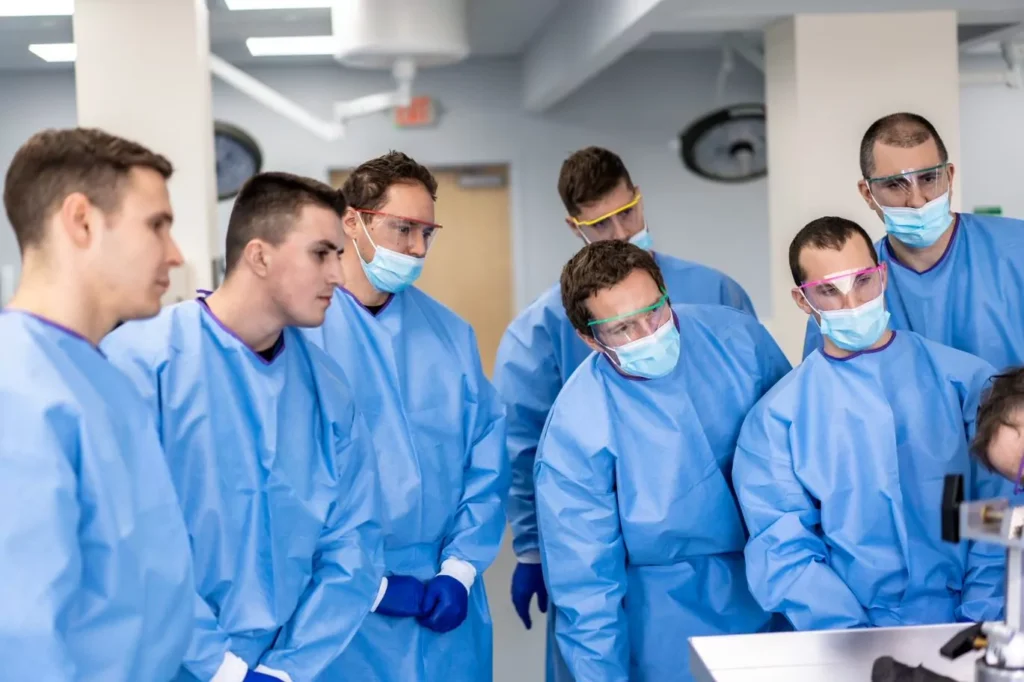With its AI-driven medical model Segmentation-as-a-Service platform, Axial3D is actively pursuing partnerships, collaborating with a range of organizations including a Swiss hospital, Stratasys, Ricoh, and GE Healthcare. This strategy aligns well with the company’s goal to become the connective tissue in the field of custom-made implants. The latest collaboration is with Bioskills NE, focusing on the development of 3D image management and modeling tools, along with image conversion tools and surgical planning.
Bringing 3D Printed Models to Medical Training
The transition from digital imaging and communications in medicine (DICOM) files to 3D printed models has historically presented challenges for many in the medical field. While software solutions for this conversion have existed for years, Axial3D has further simplified the process. By offering a service where medical professionals don’t need to handle the DICOM conversion themselves, Axial3D significantly eases the workload for already busy and resource-strained doctors and medical staff. This convenience, though seemingly minor, is actually a substantial advantage in the demanding world of healthcare.

Kidney model 3D printed by Axial3D.
As a medical training facility, Bioskills provides an ideal platform for implant companies to train surgeons on new products, such as packaging or implant designs. Similarly, medical instrument manufacturers can use this facility to familiarize professionals with the latest versions of their devices. This partnership with Axial3D is a strategic move, as it positions Axial3D’s software in the hands of medical device professionals, including new surgeons and sales representatives. By integrating its software into the training process, Axial3D not only enhances skill development but also achieves significant brand exposure. This collaboration is an excellent branding strategy, cleverly leveraging the educational environment to increase familiarity and usage of Axial3D’s products in the medical field.
“Through our collaboration with Axial3D, we are positioned to revolutionize the medical education sector by introducing innovative services that leverage the power of 3D imaging and modeling. This partnership is aligned with our mission to equip our customers with the tools necessary to establish new standards of care,” stated Bioskills NE CEO Alex Kouspakian.
“We are genuinely inspired by Bioskills NE’s mission and are delighted to partner with their esteemed team. Together, we aspire to usher in a new era of medical education and surgical practices,” said Axial3D CEO Roger Johnston.
By providing its software to Bioskills, Axial3D is effectively reaching a wide audience of medical professionals, not just a limited group of doctors. This exposure is significantly amplified as the software isn’t merely available for use; it’s actively incorporated into Bioskills’ training programs. The practical application of Axial3D’s technology, particularly in creating simulations and patient-specific models, enhances the learning experience for medical staff. Imagine the impact of comprehending a complex pathology for the first time through a 3D printed model created by Axial3D. This experience is likely to leave a lasting, positive impression, fostering a strong affinity for the brand.
Axial3D’s Potential
Axial3D is spreading its tendrils throughout the 3D printing and medical sectors. Despite the perception that the patient-specific model market was already well-developed and crowded, Axial3D has carved out a significant niche. The company simplified the process of creating models through its software and strategically collaborated with medical centers and national bodies to gain recognition and approval for reimbursement. This move not only enhanced its accessibility but also established its credibility in the medical community.
Incorporating an engineer in the model creation process and adhering to high standards, Axial3D positioned itself as a more reliable and preferable option compared to other service bureaus. By focusing on being the right choice, Axial3D made significant progress in a market where medical models are often undervalued, even though they are crucial, cost-effective teaching tools that aid in patient education and informed medical decision-making.
The value of Axial3D’s approach was recognized by Stratasys, a leader in the 3D printing industry. Stratasys’s decision to invest $10 million in Axial3D not only validates the potential of Axial3D’s business model but also opens up new avenues for collaboration.
Axial3D’s potential for expansion is considerable. By continuing to streamline and simplify the process of obtaining customized models, the company is well-positioned to become the go-to provider for many hospitals. This opens up a large business opportunity in the immediate term.
However, the longer-term prospects are even more promising. By establishing itself as the essential platform for custom file management and manipulation for hospitals, patients, and custom medical device manufacturers, Axial3D is setting the stage to become an indispensable part of the medical infrastructure. This would not only secure its position in the market but also create substantial opportunities for growth and innovation. If successful, Axial3D could become a key player in the healthcare sector, integral to patient care and medical device development.
Subscribe to Our Email Newsletter
Stay up-to-date on all the latest news from the 3D printing industry and receive information and offers from third party vendors.
You May Also Like
Gorilla Sports GE’s First 3D Printed Titanium Cast
How do you help a gorilla with a broken arm? Sounds like the start of a bad joke a zookeeper might tell, but it’s an actual dilemma recently faced by...
Nylon 3D Printed Parts Made More Functional with Coatings & Colors
Parts 3D printed from polyamide (PA, Nylon) 12 using powder bed fusion (PBF) are a mainstay in the additive manufacturing (AM) industry. While post-finishing processes have improved the porosity of...
$25M to Back Sintavia’s Largest Expansion of Metal 3D Printing Capacity Since 2019
Sintavia, the digital manufacturing company specializing in mission-critical parts for strategic sectors, announced a $25 million investment to increase its production capacity, the largest expansion to its operations since 2019....
Velo3D Initiates Public Offering in a Bid to Strengthen Financial Foundations and Drive Future Growth
Velo3D (NYSE: VLD) has been among a number of publicly traded 3D printing firms that have attempted to weather the current macroeconomic climate. After posting a challenging financial report for 2023,...

































